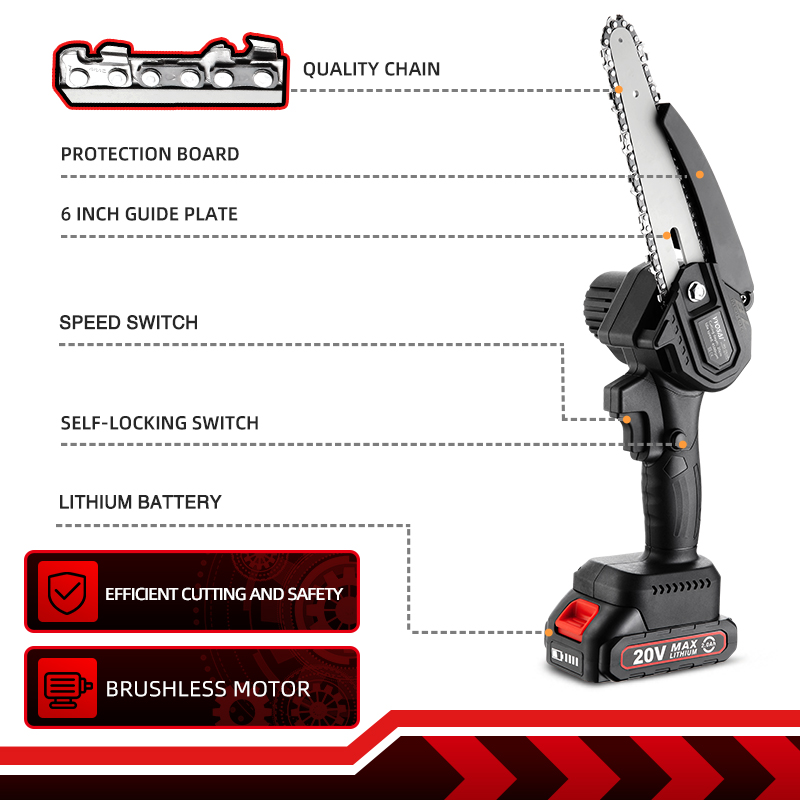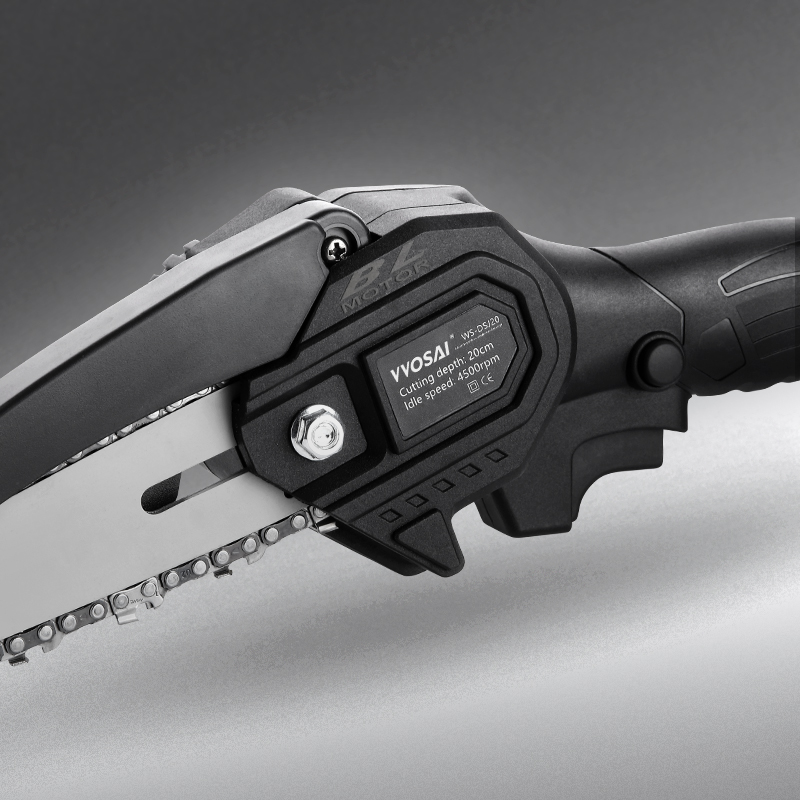The chainsaw in 2004, a tool evokes images of lumberjacks, construction workers, and even horror movie villains, has a surprisingly rich and when were chainsaws invented. Its journey from medical origins to its current status as an indispensable tool in various industries is a testament to human ingenuity and the power of technology to transform our world.

What Year were Chainsaws Invented/When were chainsaws invented
Chainsaws, now ubiquitous in forestry and construction, have a surprisingly ancient origin. When were chainsaws invented? The first concept of a chainsaw dates back to the late 18th century, with early prototypes designed for medical purposes. It wasn’t until the 19th century that the chainsaw began to evolve into a tool for more practical applications.
When were chainsaws invented ?In the 1830s, a German orthopedist named Bernhard Heine developed a chainsaw-like tool for cutting bone, which was operated manually. The first chainsaw made laid the groundwork for the chainsaw’s future development as a cutting tool. However, it wasn’t until the 20th century that chainsaws started to resemble the modern devices we recognize today.
What Were Chainsaws Originally Made For in Industry
When were chainsaws invented? The earliest recorded patent for this can be considered a modern chainsaw was filed by the German mechanical engineer Andreas Stihl in 1926. Stihl’s invention marked a significant advancement in chainsaw technology, as it featured a gasoline-powered engine and a chain with cutting teeth.
Their efficiency and speed compared to manual saws made them invaluable tools in the logging industry. Chainsaws quickly gained popularity in Europe and North America during the mid-20th century as logging operations expanded to meet the growing demand for wood products.
When Were Chainsaws Popularized
The widespread adoption of chainsaws occurred post-World War II, driven by advancements in engine technology and manufacturing processes. When were chainsaws invented and popular? During the 1950s and 1960s, chainsaws became more affordable and accessible to both professionals and hobbyists. Manufacturers such as Husqvarna, McCulloch, and Poulan emerged during this period, further fueling the chainsaw’s popularity.
Chainsaws also found applications beyond forestry and logging. They became essential tools in construction, landscaping, and even rescue operations. Their versatility in cutting through various materials, from wood to metal, contributed to their widespread use across different industries.

Environmental and Safety Considerations
As chainsaws became more prevalent, concerns arose regarding their environmental impact and safety. The noise pollution generated by chainsaws, coupled with emissions from gasoline engines, prompted regulatory agencies to introduce stricter guidelines for their use. Additionally, safety features such as chain brakes, anti-vibration systems, and protective clothing became standard to reduce the risk of accidents and injuries.
Despite these challenges, chainsaws remained indispensable in modern industry and continue to evolve with technological advancements. Electric chainsaws, powered by batteries or connected to power sources, have gained popularity due to their quieter operation and reduced emissions. These innovations reflect ongoing efforts to mitigate the environmental impact of chainsaw use while maintaining their utility.

Modern Applications and Innovations
In the 21st century, chainsaws have continued to evolve with advancements in materials, ergonomics, and safety features. Modern chainsaws are lighter, more ergonomic, and equipped with smart technologies that enhance efficiency and user safety. For example, some models feature automatic chain lubrication systems and digital controls for optimal performance.
Furthermore, the advent of robotic and automated chainsaws has revolutionized certain industries, such as forestry and agriculture. These machines can operate autonomously to fell trees, prune orchards, and perform other tasks with precision and efficiency. Robotics in chainsaw technology not only increases productivity but also reduces human labor and associated risks.
From Surgical Precision to Timber Industry Might
The chainsaw‘s origins can be traced back to the late 18th century in Scotland. While the Aitken-Jeffray chainsaw marked an early step in medical innovation, its use was not without controversy, raising ethical concerns about the potential harm to mothers and infants.
Despite the ethical debate surrounding its medical applications, the chainsaw’s potential found a new home in the timber industry. In the early 20th century, inventors like James Shand, Andreas Stihl, and Emil Lerp began developing portable chainsaws powered by electricity and gasoline. These advancements transformed the logging industry, dramatically increasing efficiency and safety compared to traditional manual methods. The introduction of chainsaws into forestry marked a turning point, allowing for faster and more controlled tree felling and timber harvesting.
World War II, American Ingenuity, and Post-War Advancements
The outbreak of World War II disrupted the supply of German-made chainsaws to North America, creating an opportunity for American manufacturers to step in. Companies like McCulloch and Poulan emerged, further refining chainsaw technology and introducing gasoline-powered models that offered greater power and portability. These advancements propelled the chainsaw into widespread use, not only in forestry but also in construction, landscaping, and even rescue operations.

The post-war era saw continued advancements in chainsaw design and performance. Engineers focused on improving engine efficiency, reducing weight, and enhancing safety features. Chainsaws became more specialized, with models tailored for specific tasks like tree felling, limbing, and carving. The development of safety standards and regulations, along with the emphasis on proper training and protective gear, helped minimize accidents and promote safe chainsaw operation.
Environmental Considerations and Cultural Significance
The widespread use of chainsaws raised concerns about their environmental impact on forests and ecosystems. Sustainable forestry practices and the responsible use of chainsaws became crucial in balancing the tool’s benefits with environmental protection. The development of environmentally friendly chainsaw technologies, such as low-emission engines and noise reduction features, further addressed these concerns.
Beyond its practical applications, the chainsaw has also gained cultural significance. The chainsaw has evolved from a medical tool to a cultural icon, symbolizing both the destructive potential and the transformative power of human innovation.
A Symbol of Transformation and Enduring Utility
The chainsaw’s journey from medical origins to modern-day applications is a remarkable tale of human ingenuity and the transformative power of technology. From its humble beginnings as a surgical tool to its current status as an indispensable industry staple, the chainsaw has revolutionized various fields and left an indelible mark on our world. As we look towards the future, it is likely that chainsaws will continue to evolve, adapting to new challenges and finding innovative applications, solidifying their place as a symbol of human progress and adaptability.

The Enduring Prowess of Chainsaws: From Medical Origins to Modern-Day Applications
Beyond Lumberjacks and Horror Films: The Diverse Applications of Chainsaws
While the image of the lumberjack wielding a chainsaw in the forest is iconic, the tool’s applications extend far beyond the logging industry. Chainsaws play a crucial role in disaster relief and emergency response. First responders utilize them to clear debris after storms, earthquakes, and other natural disasters, creating access routes and rescuing trapped individuals. Artists exploit the chainsaw’s power and versatility to create impressive sculptures with intricate details, showcasing the artistic potential of this often-industrial tool.
A Global Industry and the Future of Chainsaw Technology
The chainsaw market is a global one, with leading manufacturers like Stihl, Husqvarna, and McCulloch dominating the industry. These companies constantly push the boundaries of technology, developing lighter, more powerful, and more fuel-efficient models. Battery-powered chainsaws are becoming increasingly popular due to their lower emissions and quieter operation. Furthermore, autonomous or robotic chainsaws hold promise for further improving efficiency and safety in industries like forestry and disaster relief.
A Legacy of Innovation and the Chainsaw’s Enduring Appeal
The chainsaw’s story is a testament to human ingenuity and our constant drive to develop tools that make our lives easier and our work more efficient. From its controversial medical origins to its widespread use in various industries. The chainsaw has left an undeniable mark on human history. While its image evokes both power and danger, the chainsaw’s enduring appeal lies in its adaptability. Its continued potential to transform the way we interact with our environment. As technology continues to evolve, the chainsaw will undoubtedly adapt to new challenges. And find innovative applications, remaining a vital tool for generations to come.
The Evolution of Chainsaw Design: A Journey from Manual Labor to Modern Engineering
The chainsaw’s design has undergone a remarkable evolution, reflecting advancements in technology and changing demands over time. The earliest models, like the Aitken-Jeffray chainsaw, were entirely manual, requiring significant effort to operate. The introduction of electric and gasoline engines in the early 20th century revolutionized chainsaw use, offering greater power and portability. However, these early models were often bulky and heavy, requiring two operators for some tasks.
The post-war era witnessed a shift towards lighter, more user-friendly designs. Engineers focused on ergonomics, incorporating features like vibration reduction and improved handle placement to enhance comfort and control. Modern chainsaws are marvels of engineering. Boasting powerful engines, automatic chain lubrication systems. And safety features like chain brakes and kickback protection. This evolution reflects a commitment to making chainsaws not only more powerful but also safer and easier to operate.
The Human Element: Training, Safety, and the Responsible Use of Chainsaws
Despite advancements in safety technology, chainsaws remain powerful tools that demand respect and proper handling. Safety training is paramount for anyone wielding a chainsaw. Understanding operational procedures, proper maintenance techniques. And the importance of protective gear like chaps, gloves, and eye protection are essential for preventing accidents. The responsible use of chainsaws also extends to environmental considerations.